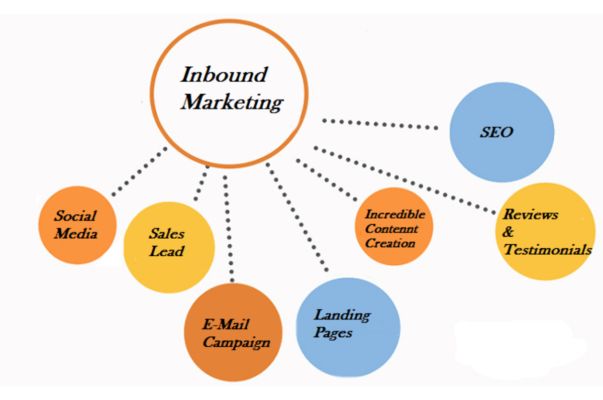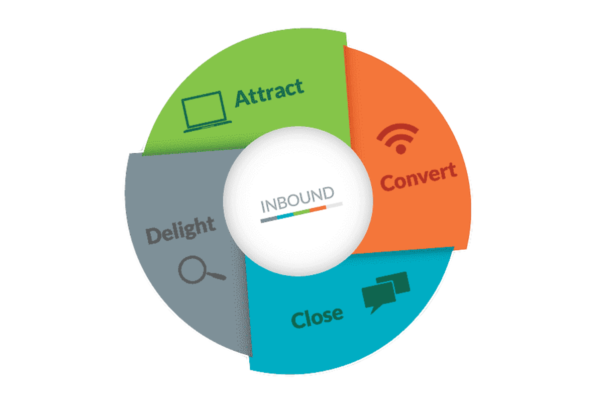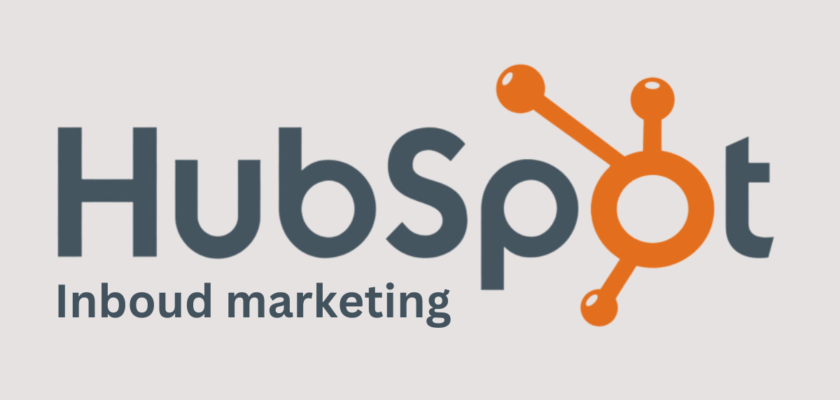Introduction
Inbound marketing has become an essential component of modern business strategy, and HubSpot's solutions are at the forefront of this trend.
With this guide, you'll learn how to use HubSpot's powerful inbound marketing and sales tools to attract, engage, and convert your target audience. Whether you're just starting out or looking to optimize your existing setup, this guide is the ultimate resource for anyone looking to drive growth and success through inbound marketing and sales.
What is Inbound Marketing and Sales?

Inbound marketing and sales refer to a strategic approach to attracting and retaining customers by providing valuable, relevant, and personalized content and experiences. The focus is on building trust and credibility with potential customers, rather than interrupting them with traditional outbound marketing tactics such as cold calling and mass advertising.
Overview of HubSpot’s Inbound Marketing and Sales Solutions
HubSpot is a leading inbound marketing and sales platform that helps businesses attract, engage, and delight customers. The platform offers a comprehensive suite of tools designed to support all aspects of the inbound marketing and sales process, including content management, search engine optimization (SEO), social media marketing, email marketing, lead generation, lead nurturing, sales enablement, customer relationship management (CRM), and more.
Overall, HubSpot is a powerful and versatile inbound marketing and sales platform that can help businesses of all sizes to attract, engage, and convert their target audience. Whether you're just starting out or looking to optimize your existing setup, HubSpot has everything you need to succeed with inbound marketing and sales.
Benefits of Using HubSpot's Inbound Marketing and Sales Solutions
Increased Efficiency
By using HubSpot’s inbound marketing and sales solutions, businesses can streamline and automate key processes, resulting in increased efficiency and productivity. Features such as lead prioritization, task management, and the ability to track and measure performance in real-time, help businesses work smarter, not harder.
Improved Customer Experience
HubSpot’s inbound marketing and sales solutions provide businesses with the tools and resources they need to deliver a seamless, personalized customer experience. Features such as lead nurturing, sales enablement, and sales prospecting, help businesses engage with potential customers in a meaningful way, resulting in increased customer satisfaction and loyalty.
Better Results
By using HubSpot’s inbound marketing and sales solutions, businesses can achieve better results in terms of increased traffic, leads, sales, and revenue. Features such as landing pages and forms, email marketing, and sales automation, help businesses drive conversions and achieve their goals.
Data-Driven Decisions
HubSpot’s inbound marketing and sales solutions provide businesses with real-time data and insights into their performance, enabling them to make data-driven decisions and optimizations. Features such as sales analytics, search engine optimization, and social media analytics, help businesses make informed decisions that drive results.
Integration and Flexibility
HubSpot’s inbound marketing and sales solutions are designed to be flexible and integrate seamlessly with other tools and platforms. Features such as integration with popular sales tools and platforms, and the ability to customize and tailor solutions to meet specific business needs, help businesses achieve their goals and get the most out of their investment.
Increased Collaboration
HubSpot’s inbound marketing and sales solutions encourage increased collaboration and communication between teams, resulting in better results and a more cohesive customer experience. Features such as shared calendars, task management, and the ability to track and measure performance in real-time, help teams work together towards common goals.
Read more: 5 Key Benefits of Using HubSpot for Your Business and How to Get Started
What is the Inbound Methodology?
An inbound methodology is a customer-centric approach to marketing and sales that focuses on attracting, engaging, and delighting customers. The goal of the inbound methodology is to create a positive, seamless customer experience by delivering valuable content and experiences that help customers solve their problems and achieve their goals.
The inbound methodology is based on the idea that customers are more likely to engage with businesses that offer them something of value, rather than businesses that simply interrupt them with irrelevant or annoying advertisements. By creating and sharing valuable content, businesses can attract the attention of their target audience, build relationships with them, and ultimately drive more sales and customer loyalty.
Stages of Inbound Methodology
The inbound methodology consists of four stages:
Attract: In this stage, businesses use content, search engine optimization (SEO), and social media marketing to attract the attention of their target audience and generate website traffic.
Convert: In this stage businesses use lead magnets, landing pages, and forms to convert website visitors into leads.
Close: In this stage, businesses use sales enablement tools and techniques to close deals and make sales.
Delight: In this stage, businesses use customer relationship management (CRM) tools and techniques to provide ongoing support and build customer loyalty.

Overall, the inbound methodology is a comprehensive approach to marketing and sales that helps businesses to create a positive customer experience and achieve their goals. By focusing on attracting, engaging, and delighting customers, businesses can build lasting relationships with their target audience and drive long-term success.
Inbound Marketing satratgies
Inbound marketing strategies are tactics that businesses use to attract, engage, and delight customers through valuable content and experiences. By implementing effective inbound marketing strategies, companies can generate website traffic, increase lead generation, and improve sales and customer loyalty. Here are some of the most effective inbound marketing strategies:
Content creation: Creating valuable, relevant, and engaging content is the foundation of inbound marketing. Businesses should focus on creating content that their target audience will find useful and informative, such as blog posts, ebooks, webinars, infographics, and videos.
Search engine optimization (SEO): Optimizing your website and content for search engines is crucial to attracting organic traffic and improving your search engine rankings. This involves using keywords, meta descriptions, title tags, and other SEO best practices to make your content more visible to search engines and users.
Social media marketing: Social media is a powerful tool for reaching and engaging with customers. By creating and sharing valuable content on social media, businesses can build relationships with their target audience, increase brand awareness, and drive website traffic.
Lead magnets: Lead magnets are incentives that businesses offer in exchange for a lead's contact information, such as an ebook, webinar, or free trial. Lead magnets can be used to increase lead generation and provide value to prospects.
Landing pages: Landing pages are dedicated pages on a website that are optimized for lead generation. By using clear, concise, and compelling copy, images, and forms, businesses can convert website visitors into leads.
Email marketing: Email marketing is a cost-effective way to reach and engage with customers. By sending regular, relevant, and valuable emails, businesses can build relationships with their target audience, increase brand awareness, and drive sales.
Sales enablement: Sales enablement is the practice of providing sales teams with the tools and resources they need to succeed. This includes providing sales teams with content, training, and technology to help them engage with customers and close deals more effectively.
Customer relationship management (CRM): CRM is a system for managing customer interactions and relationships. By using CRM software, businesses can manage their customer data, automate marketing and sales processes, and improve customer engagement and loyalty.
These are some of the most effective inbound marketing strategies that businesses can use to attract, engage, and delight customers. By implementing these strategies, companies can improve their inbound marketing and sales performance and achieve their goals.
Products offered by Hubspot Inbound Marketing
HubSpot offers a range of products as part of its Inbound Marketing solution, including:
Marketing Hub
This is a comprehensive platform that offers features such as SEO optimization, content management, email marketing, social media management, and analytics.
Sales Hub
A sales acceleration platform that provides sales teams with tools such as email tracking, lead nurturing, meeting scheduling, and deal management.
Service Hub
A customer service platform that provides features such as ticket management, live chat, knowledge base management, and customer feedback.
CMS Hub
A content management system that offers a scalable and flexible solution for managing websites and digital assets.
Free CRM
A free customer relationship management tool that provides a centralized database for all customer interactions and data.
Operations Hub
Operations Hub is a new addition to Hubspot's product suite, aimed at streamlining and automating operations for businesses. It offers a range of tools such as workflows, reporting, and dashboards to help businesses efficiently manage their day-to-day operations, allowing them to focus on growth and customer engagement.
Each of these products can be used together or separately, depending on your specific business needs and goals. The products are designed to work seamlessly together to provide a complete inbound marketing and sales solution.
Choosing the Right HubSpot Package for Your Business
HubSpot’s free CRM is a great option for businesses just starting out or those on a tight budget. It offers basic lead and contact management, integration with other HubSpot tools, and the ability to track and measure performance in real time.
Starter Package
The starter package is designed for small businesses and offers more advanced features, such as sales automation, email marketing, and sales enablement. It’s an excellent option for businesses looking to take their marketing and sales efforts to the next level.
Professional Package
The professional package is designed for growing businesses and offers even more advanced features, such as advanced sales analytics, lead scoring, and landing pages and forms. It’s an excellent option for companies looking to scale their marketing and sales efforts and drive better results.
Enterprise Package
The enterprise package is designed for large businesses and offers the full suite of HubSpot’s inbound marketing and sales solutions. It’s a great option for businesses looking to fully integrate and streamline their marketing and sales efforts, drive better results, and deliver a seamless customer experience.
Custom Package
For businesses with specific needs and requirements, HubSpot offers custom packages that can be tailored to meet specific business needs. This includes the ability to add or remove features and tools, and the option to choose a monthly or annual billing plan.
Factors to Consider When Choosing a Package
When choosing a HubSpot package, it’s important to consider factors such as budget, business size, marketing and sales goals, and specific needs and requirements. By carefully considering these factors, businesses can choose the right package to meet their needs and achieve their goals.
Read more: Why HubSpot is the Best Choice for Your Company’s Marketing, Sales, and Service Needs
Implementing and Getting the Most Out of HubSpot's Inbound Marketing and Sales Solution
Setting Up and Configuring
To get the most out of HubSpot’s inbound marketing and sales solutions, it’s important to set them up correctly and configure them to meet specific business needs. This includes tasks such as creating and customizing landing pages and forms, setting up email marketing campaigns, and integrating with other tools and platforms.
Training and Support
HubSpot offers extensive training and support resources to help businesses get the most out of their inbound marketing and sales solutions. This includes access to online resources, training courses, and a dedicated support team to help with any questions or issues.
Best Practices and Optimization
By following best practices and optimizing their use of HubSpot’s inbound marketing and sales solutions, businesses can achieve better results and get the most out of their investment. This includes tasks such as regularly tracking and measuring performance, making data-driven decisions, and optimizing campaigns and strategies to meet specific goals.
Staying Up-to-Date
To stay up-to-date with the latest features and advancements in HubSpot’s inbound marketing and sales solutions, it’s important to regularly check for updates and take advantage of new features and tools. This helps businesses stay ahead of the curve and achieve their goals in an ever-changing marketing landscape.
Working with a Partner
For businesses looking for additional support and guidance, working with a HubSpot partner can be extremely beneficial. HubSpot partners are experts in the platform and can provide tailored support and guidance, help with implementation and optimization, and offer valuable insights and best practices.
Conclusion
By choosing the right HubSpot package, implementing and optimizing the platform, and taking advantage of training and support resources, businesses can achieve their marketing and sales goals and get the most out of their investment in HubSpot’s inbound marketing and sales solutions.




